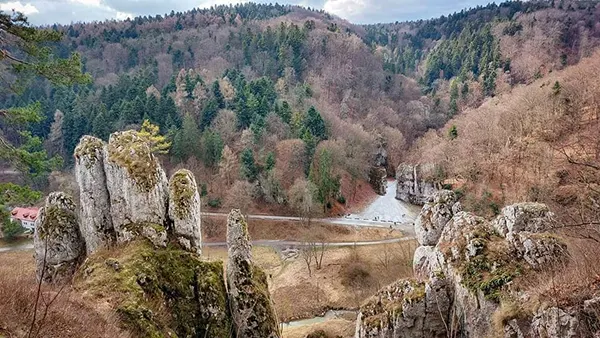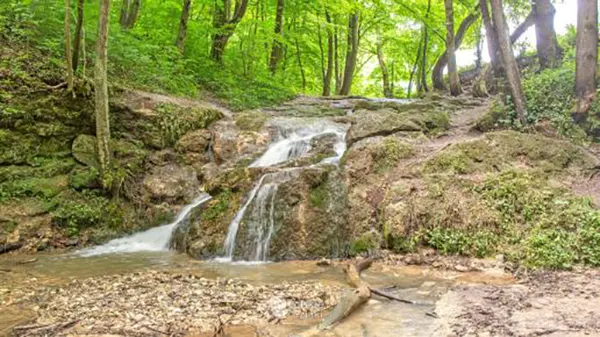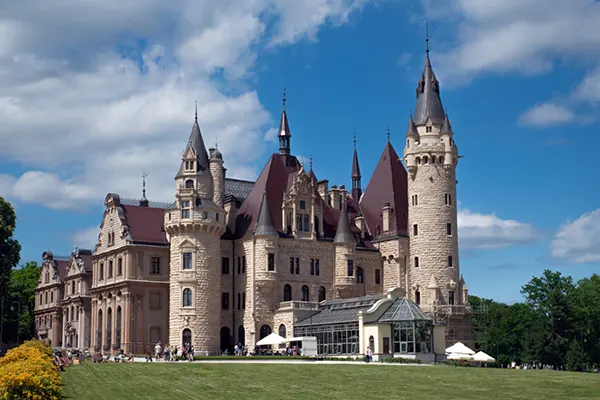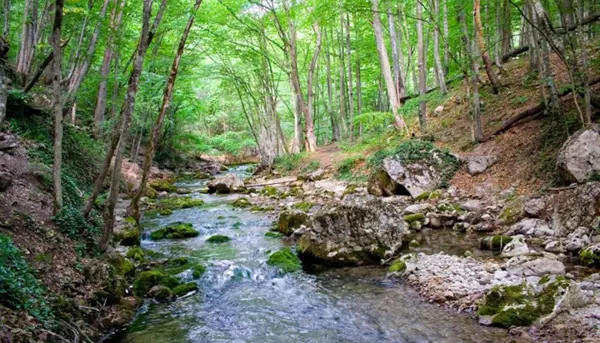
Kraków Valleys — Picturesque Gorges, Rocks and Walking Trails near Kraków
The Kraków Valleys, known in Polish as Dolinki Krakowskie, are a natural treasure situated just a short drive from the historic city of Kraków. This network of gorges, limestone cliffs and green meadows forms one of the most beautiful landscapes in southern Poland. In 2025, the area continues to attract both local residents and tourists seeking peace, hiking trails and a genuine connection with nature. Managed partly under the Kraków Valleys Landscape Park, the region offers both natural diversity and cultural heritage in equal measure.
Geography and Natural Features of the Kraków Valleys
The Kraków Valleys stretch along the Jurassic Upland, a region renowned for its dramatic limestone formations created over millions of years. The valleys vary in size and character — from the steep, rocky walls of the Będkowska and Kobylańska Valleys to the softer, greener slopes of the Bolechowicka and Racławka Valleys. The geological diversity makes this area an open-air textbook of natural history.
Several caves are scattered throughout the park, including the popular Mamutowa and Nietoperzowa caves. These caves are not only geological wonders but also important archaeological sites that preserve traces of prehistoric human habitation. Visitors can explore some of these under guided tours, ensuring the preservation of delicate ecosystems inside.
In spring and summer, the Kraków Valleys bloom with wildflowers and rare plant species. Orchids, liverworts and alpine plants grow on the sunny slopes, while shaded parts are filled with ferns and mosses. This makes the region a paradise for botanists and photographers alike.
Flora and Fauna Diversity
The biodiversity of the Kraków Valleys reflects the harmony between rock, forest and meadow ecosystems. The area is home to more than 900 species of plants and hundreds of animal species, including roe deer, foxes, badgers and numerous bird species. The limestone cliffs provide nesting spots for falcons and owls, while the streams are inhabited by amphibians and insects that indicate clean water quality.
In recent years, environmental projects have been launched to restore damaged habitats and promote sustainable tourism. These efforts aim to protect endangered species and maintain the natural balance that has existed for centuries. Guided eco-tours now include educational elements on local biodiversity and conservation.
For visitors interested in quiet observation, several wooden viewing points have been built along the trails. From these spots, you can watch birds, admire the forest canopy, or simply enjoy the serenity of the valleys at sunrise or sunset.
Hiking Trails and Outdoor Activities
The Kraków Valleys offer an extensive network of hiking trails suitable for walkers of all levels. Well-marked routes lead through forests, meadows and cliffs, linking villages and historical landmarks along the way. One of the most famous routes is the Będkowska Valley Trail, which runs past the monumental Sokolica Rock, a favourite climbing spot.
For cycling enthusiasts, the Kraków Valleys also feature a growing number of bike-friendly paths. The terrain varies from easy scenic routes to more demanding off-road tracks. In 2025, digital maps and mobile apps make it easy to plan routes, locate viewpoints and find local guesthouses along the way.
Winter brings a completely different charm to the area, as snow-covered paths attract cross-country skiers and photographers seeking peaceful winter landscapes. The Kraków Valleys maintain their appeal throughout the year, offering outdoor recreation for every season.
Rock Climbing and Adventure Tourism
The limestone rocks of the Kraków Valleys have long been a magnet for climbers from Poland and abroad. With routes ranging from beginner-friendly to advanced technical climbs, the region is considered one of Poland’s most significant climbing destinations. Sokolica, Dupna Skała and Zamkowa Góra are just a few of the locations that offer safe and challenging ascents.
Local climbing associations maintain and inspect the routes to ensure safety standards. Many clubs also provide equipment rental and training sessions for those new to climbing. These initiatives make the valleys an accessible and welcoming place for anyone interested in trying outdoor sports.
Beyond climbing, adventure tourism has expanded to include guided speleological tours and mountain biking routes. These activities are regulated by park authorities to balance visitor experience with environmental protection, ensuring that nature remains untouched by excessive traffic.

Cultural Heritage and Local Attractions
The Kraków Valleys are not only a natural wonder but also a region rich in cultural and historical heritage. Scattered across the landscape are medieval castles and chapels, remnants of the defensive chain known as the Trail of the Eagles’ Nests. One of the most visited is the Ojcowski Castle, standing proudly above the Prądnik Valley.
Villages surrounding the valleys, such as Bolechowice and Jerzmanowice, preserve traditional wooden architecture and folk customs. Local inns serve regional dishes like pierogi, smoked cheeses and homemade soups, allowing travellers to enjoy authentic Polish flavours after a day of hiking.
Each summer, cultural events and eco-festivals are organised to celebrate local traditions and raise awareness of environmental protection. These gatherings attract both residents and tourists, creating a sense of community and continuity between the region’s past and its present-day values.
Practical Information for Visitors
Reaching the Kraków Valleys is simple — they are located around 20–30 kilometres northwest of Kraków, accessible by car, public transport or cycling routes. Entry to most trails is free, although certain caves and climbing areas may require permits. It is advisable to wear proper footwear and carry water, especially during summer.
Visitors will find numerous accommodation options nearby, ranging from family-run guesthouses to eco-lodges designed with sustainability in mind. Local tourism boards offer digital guides that include route maps, safety information and details about seasonal events.
To protect the natural landscape, authorities encourage visitors to follow the “Leave No Trace” principle — take rubbish home, stay on marked paths and respect wildlife habitats. This responsible approach ensures that the Kraków Valleys remain a pristine and educational destination for generations to come.
Popular articles
-
 Moszna Castle: A Fairytale Landmark of Lower Silesia
Moszna Castle: A Fairytale Landmark of Lower SilesiaMoszna Castle stands as one of the most recognisable historical …
-
 Roztocze — the Green Pearl of Eastern Poland
Roztocze — the Green Pearl of Eastern PolandRoztocze, a scenic region stretching across the Lublin Voivodeship in …
-
 Kraków Valleys — Picturesque Gorges, Rocks and Walking Trails near Kraków
Kraków Valleys — Picturesque Gorges, Rocks and Walking Trails near KrakówThe Kraków Valleys, known in Polish as Dolinki Krakowskie, are …
